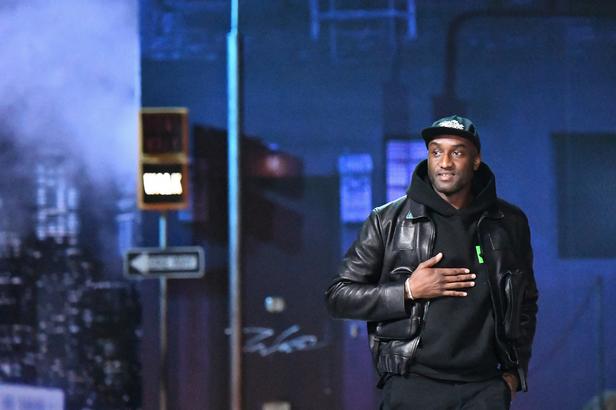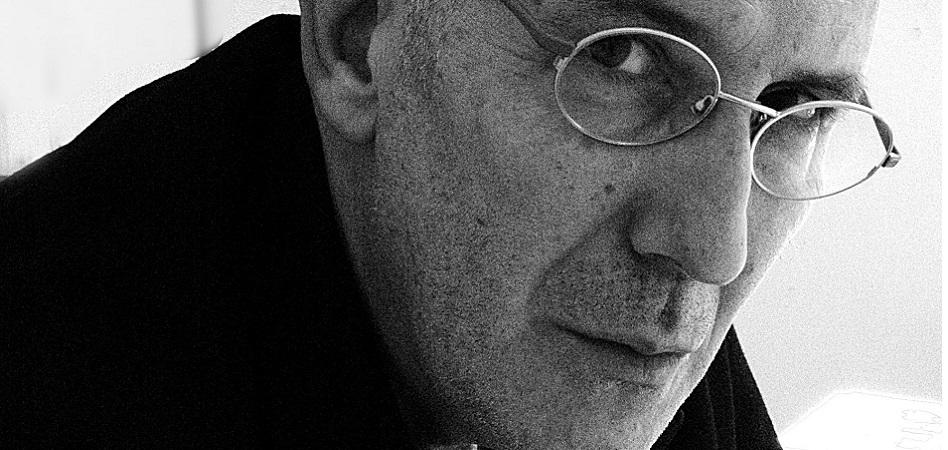Goodbye Virgil, welcome Nigo: Paris men's fashion week, between farewell and rebirth
Fashion has been rocked for several years now. While the sector reflects, among other things, on sustainability and racism, the pandemic has made everything more complex. Fashion Weeks in traditional format survive, but they have also been transformed. At first glance, the calendars seem lighter, with fewer shows. At the same time, the number of presentations, sometimes with models, sometimes with just clothes on mannequins or on a rack, has increased considerably.
Many medium and small brands continue to opt for the video format. It is safer and cheaper. Many buyers and journalists do not travel, videos are a solution. And those who follow the traveling fashion circus live no longer really count. You can't run from showroom to runway all day, and browse YouTube in between.
In both Milan and Paris, Fashion Weeks have been rather intimate. With smaller pavilions, often aimed at an ultra-selective clientele (at Kenzo, the front row was packed with celebrities).
In addition, Fashion Weeks have acquired a more public component, especially in Paris. Instagram has opened a pop-up space where everyone can take selfies with decorations created by an influencer. The event took place at 35-37, the new Dover Street Market space in the Marais, where sustainable shoe brand Viron and men's label Phipps also set up pop-ups, the latter with its vintage line, Phipps Gold Label. Elsewhere in Paris, Sarah Andelman, from the almost mythical concept store Colette, opened an ephemeral store, Just A Space, with books, art and food.
Farewells and greetings
A melancholy haze hung over Fashion Weeks. There were many goodbyes:
Italian menswear designer Nino Cerruti, with whom Giorgio Armani began his career, died at the age of 91, a few weeks after the liquidation of the label that bore his name and with which he had no longer been associated since the turn of the century.
Also André Leon Talley, the American giant who, in his opulent robes, packed the front rows of New York, Milan and Paris for years as a reporter and Vogue icon, among others.
And finally, the cult designer Manfred Thierry Mugler, who passed away yesterday in the last breaths of fashion week.
On the other hand, the fashion world also said "goodbye" to Virgil Abloh, the most important menswear designer of his generation. Not precisely because Abloh was a brilliant designer, but because of the impact he had on the textile industry and the rest of the world.
Text continues below photos.
Louis Vuitton showcased the American designer's eighth and final collection for the brand in a setting that referenced The Wizard of Oz, the Hollywood classic that also inspired his Vuitton debut, with a sky-blue house in the clouds.
It was more of a commemoration ceremony than a parade, with dancers, acrobats, musicians and a starring role for Abloh's team. In the end, there were angels, and all the participants stood still, their eyes fixed on the sky. The orchestra continued playing.
Those who were there (there were two performances, one for the press and one for friends and family) commented that it was a deeply moving moment. The Vuitton showroom, in which the decorated catwalk has been partially recreated, allows a more objective view of the collection. As usual with Abloh, he went in all directions, with appetizing accessories, unique pieces (with floral prints or classic check embroideries).
Will Nigo take over Abloh's baton soon?

Japanese style guru Nigo, 51, made his debut at Kenzo, where he succeeded Felipe Oliveira Baptista. This last designer had to relaunch the brand at the beginning of the pandemic, which in itself was not obvious, because Oliveira Baptista had not turned out to be a good signing for the brand.
Nigo, who launched Japanese streetwear labels A Bathing Ape and Human Made and has collaborated with everyone from Uniqlo to Louis Vuitton, has been in some ways an Abloh avant la lettre, while also being a disciple of his: a streetwear legend who is as much a businessman as he is a creative genius, always cool, and who is not afraid of populism. By the way, it was Nigo who once introduced Abloh to Michael Burke, the head of Vuitton.
Ye -formerly Kanye West- and his recent partner Julia Fox, sat front row at the Galerie Vivienne show, the covered passage where Kenzo opened his Jungle Jim boutique in 1970. They wore matching jeans (she by Schiaparelli , which inaugurated its Haute Couture Week yesterday). And a little further on were J Balvin, Pusha T, Pharrell Williams and Tyler The Creator, among others.
How to Take an Autistic Child to a Restaurant https://t.co/ymzORVJqPg
— wikiHow Rising Stars Wed Apr 13 20:31:34 +0000 2016
The clothes were exactly what you'd expect from Nigo: playful, happy, and businesslike, with references to Paris (berets), Japan (kimonos and souvenir jackets), and Kenzo heritage (poppy prints, among others).
Text continues below photo.
It wasn't very extensive, but the collection was good news for Kenzo. He reconnects with the concept of Humberto Leon and Carol Lim, after two years of hiatus. Nigo is far less progressive than his American predecessors, yet he has the support of the entire hip hop crowd. Within the LVMH group, Kenzo is taking on the role of Vuitton: a similar aesthetic for a similar crowd of streetwear aficionados, but at cheaper prices. everyone wins.
There were other, less spectacular debuts in Paris. Lukhanyo Mdingi, a South African finalist for the LVMH Prize, opened Men's Week with a compelling presentation, featuring knitwear in bright colours.
Another laureate, ANDAM laureate Bianca Saunders, moved from London to Paris Fashion Week (as did Teppei Fujita, from Sulvam, Japan, who set up her studio in a small office near Yohji Yamamoto's headquarters, where he was previously an assistant).
Text continues below photo.
From Belgian to Japanese
The Parisian fashion calendar traditionally includes many Belgian and Japanese designers and brands. They opted, as always, for video presentations, which created a certain vacuum. Belgian designer Dries Van Noten filmed his presentation in a Saint-Germain-des-Prés mansion (with couples kissing and Suicide's 'Dream Baby, Dream' soundtrack); another Belgian designer, Jan Jan Van Essche joined forces again with filmmaker Ramy Moharam Fouad, and a third Belgian, Walter Van Beirendock showed his more aggressive side and collaborated with the Komono eyewear manufacturer.
Glenn Martens was the only couturier from the country with a live show, since his Y/Project label is based in Paris. He rented a huge merchandise warehouse on the outskirts of Paris and gave a sneak peek of his Haute Couture collection for Gaultier, due out later this week: hypnotic trompe l'oeils of nude bodies on suits, tops, pants and dresses.
Text continues below photo.
Comme des Garçons and Junya Watanabe stayed in Tokyo. Watanabe's video, a tribute to Jay Kay, 90s pop sensation Jamiroquai, was one of the highlights of the season. Some brave brands - Issey Miyake Homme Plissé and Facetasm - put on a presentation with the help of local teams, not an easy feat.
Young Taiwanese brand Namesake also ran a remote event, featuring a movie showing, basketball players and a jazz band performing in a basement: a successful launch for a brand that is already making a name for itself. name in the world of hypebeasts.
The boys and girls of Youths In Balaclava came all the way from Singapore to meet with buyers and journalists. The trip, they told in their showroom, had been exhausting.
The greats
At times, it seemed that everything was as before, especially in Dior, which built an ephemeral building in the Place de la Concorde and recreated the neighboring Alexander III Bridge in it. The collection did not need this exaggerated grandeur. Men's creative director Kim Jones has dug through the Christian Dior archives in the 1940s and 1950s, resulting in a sea of grays (and a much-discussed collaboration with Birkenstock). It was Kim Jones' best collection for Dior since her debut at the house, but also something of a fantasy in the tradition of the Netflix series Emily in Paris: an idealized image of French elegance.
Text continues below photo.
Rick Owens, Loewe and young designer Louis Gabriel Nouchi all bet on sex, from the hardest on Owens ("urinary" was written on one top) to the lightest on Jonathan Anderson for Loewe (who also showed off a tunic with kitten print). Both Owens and Anderson played with light. The first had lights on the heads of their masked gladiators, the second had costumes decorated with LEDs. Nouchi's brand LGN is making the underwear all the rage, launching a line of swim trunks with briefs and bodysuits, showcased by a rather inclusive cast of well-endowed men.
There were also big fashion shows in Paris for brands like Hermès and Ami.
In Milan, Prada was once again hooked on the big shows at the Fondazione Prada (for the second time after the women's show in September). It was the brand's first men's show since Raf Simons joined Miuccia Prada as co-designer, with a host of famous actors in the cast including Kyle MacLachlan and Jeff Goldblum. The wardrobe was quite masculine and oversized, with leather capes and broad shoulders like the ones Simons showed off in his Jil Sander day.
Also in Milan, Dsquared returned, with founders Dean and Dan Caten giving a speech before the show. At Dolce & Gabbana, almost the entire show revolved around a performance by pop star Machine Gun Kelly. Zegna and Philipp Plein organized fashion shows in their respective showrooms, unlike the blockbusters that both brands are used to. Zegna organized the screening of a film for around fifty spectators, forty of whom were Italian. After the film, the general director Gildo Zegna and the artistic director Alessandro Sartori gave a press conference, followed by a presentation with fourteen models. Sartori presented his reinterpretation of the suit, less formal than the classic business uniform. It was a strange and almost sad moment. It seemed that you were in the meeting room of a cheap hotel.
Lemaire made perhaps the most beautiful statement at Paris Fashion Week. Christophe Lemaire and Sarah-Linh Tran exhibited at the Ateliers Berthier, a former repository for theater sets. On the wall hung a gigantic meter-long photograph of a cloudscape. As the show began, the photograph slowly rolled up towards the ceiling. And so the sun appeared, and under it a beach and the sea. It was as if a new day had begun. The world keeps turning and everything will be fine.
This article was originally published on FashionUnited.BE, and translated and edited from Dutch to Spanish by Veerle Versteeg.









